Road Risk Alert: Distracted Driving and Speeding Fluctuate with February Festivities
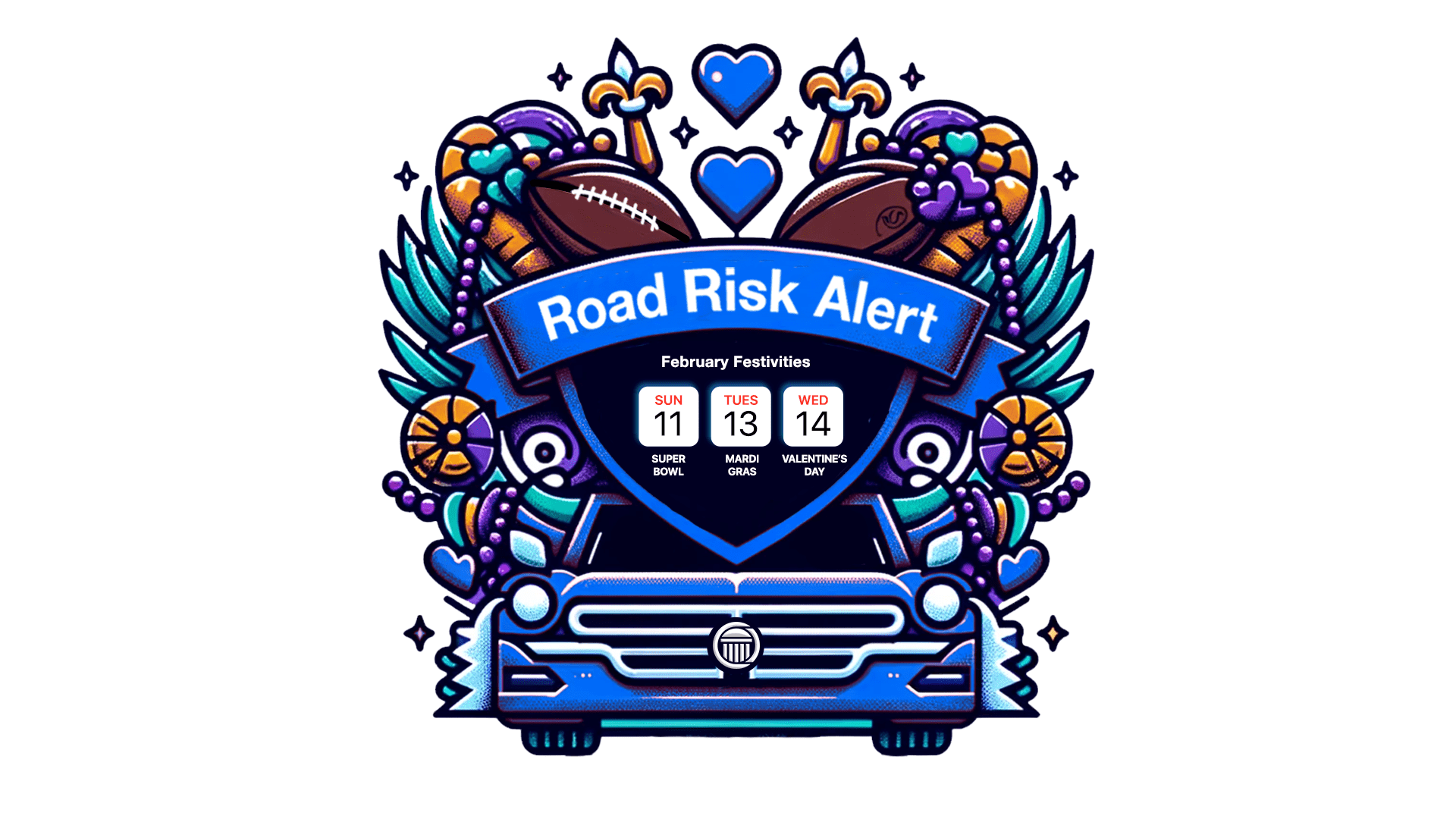
February may be the shortest month, but it’s also a month full of festivities that can lead to risky driving. The convergence of Super Bowl Sunday, Mardi Gras, and Valentine’s Day results in fluctuations in distracted driving and speeding within a single week.
According to a new CMT analysis, Super Bowl Sunday is among the year’s top 25 most distracted days. It also sees the most speeding of the three celebrations. On the other hand, Mardi Gras sees a drop in distracted driving and speeding in Louisiana. Meanwhile, Valentine’s Day doesn’t see any impact on distracted driving across the country.
To understand the changes in driving behaviors across all celebrations, CMT analyzed driving patterns and behaviors two weeks before and after each holiday from 2020 to 2023, covering over 90 million car trips.
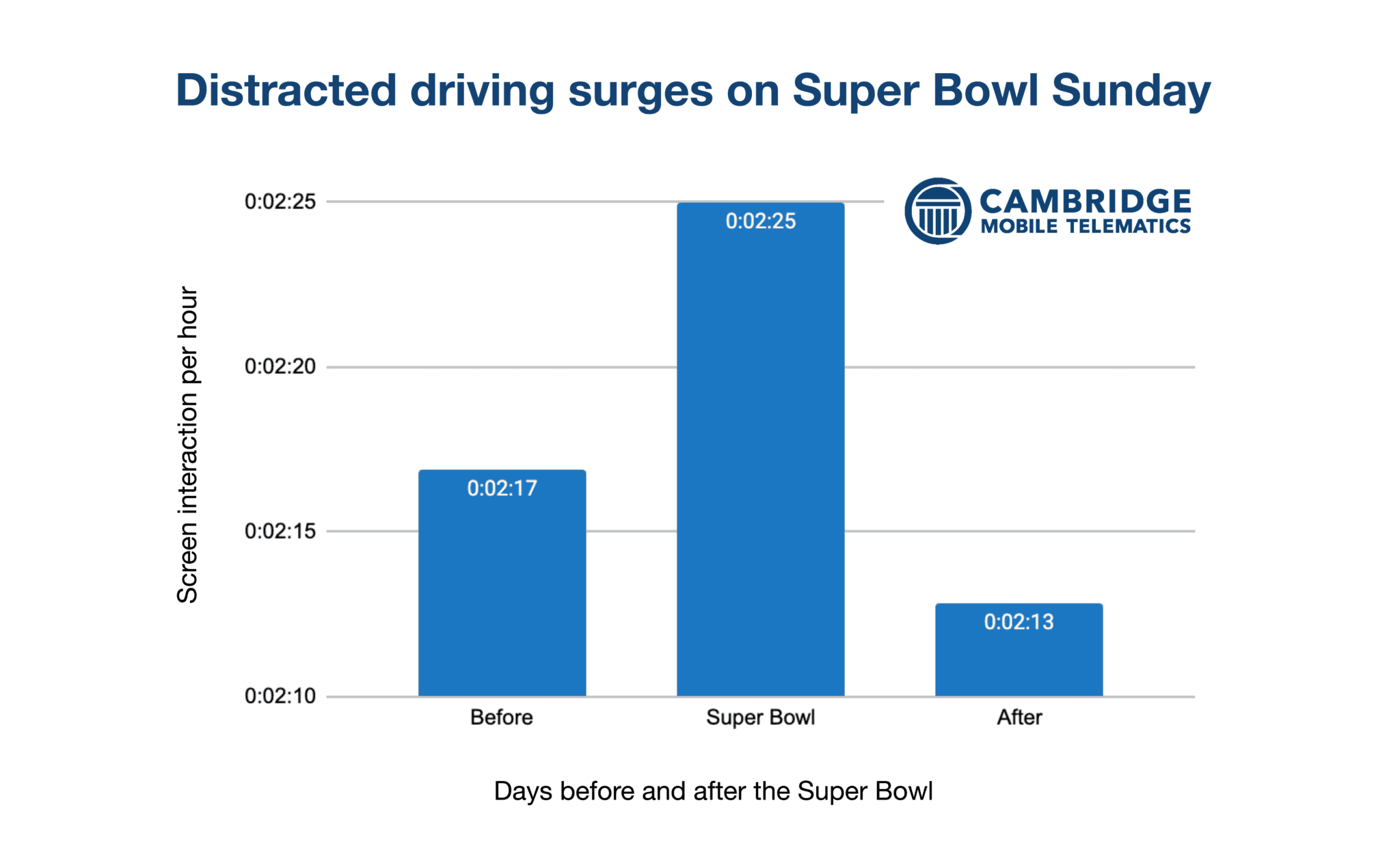
Super Bowl Sunday
Super Bowl Sunday is notorious for distracted driving surges when thousands of people drive to watch parties for the big game. On an average day around the Super Bowl, drivers spend 2 minutes and 15 seconds per hour using their phones behind the wheel. On Super Bowl Sunday, distracted driving rises to 2 minutes and 25 seconds per hour — a 7.5% surge in screen interaction. CMT defines distracted driving — screen interaction — as when a driver taps on the screen while the vehicle is traveling over 9 mph.
There’s been a consistent surge in distracted driving on game day year after year since 2020. In 2020, distraction rose to 2 minutes and 24 seconds — a 6.9% increase from the average day. Super Bowl Sunday in 2021 and 2022 saw the biggest spikes in screen interaction. Two years in a row, drivers spent 2 minutes and 31 seconds per hour using their phone behind the wheel — a 16-second increase from surrounding days.
The spike in distracted driving on Super Bowl Sunday has fatal consequences. CMT’s research shows that for every 10% increase in distracted driving, the crash rate jumps by 1.4%. We estimate the 7.5% average increase in screen interaction on game day has caused an additional 626 crashes, 2 fatalities, and nearly $15 million in economic damages over the past three years.
While Super Bowl Sunday sees high levels of distracted driving, there’s a glimmer of hope. Distracted driving rates fell in 2023 when drivers spent 2 minutes and 14 seconds — a 4.5% reduction from the previous year.
Distracted driving isn’t the only risky behavior that surges the day of the big game though. Super Bowl Sunday sees an even greater uptick in speeding. On Super Bowl Sunday, drivers spend 3 minutes and 21 seconds speeding, a 34% increase from 2 minutes and 30 seconds on surrounding days. Last year, speeding rose by 41% on game day.
Speeding and distracted driving is a deadly combination. The difference between a crash at 45 mph and one at 40 mph can be the difference between life and death, as shown in this IIHS analysis. A distracted driver will hit the car in front of them at full speed.
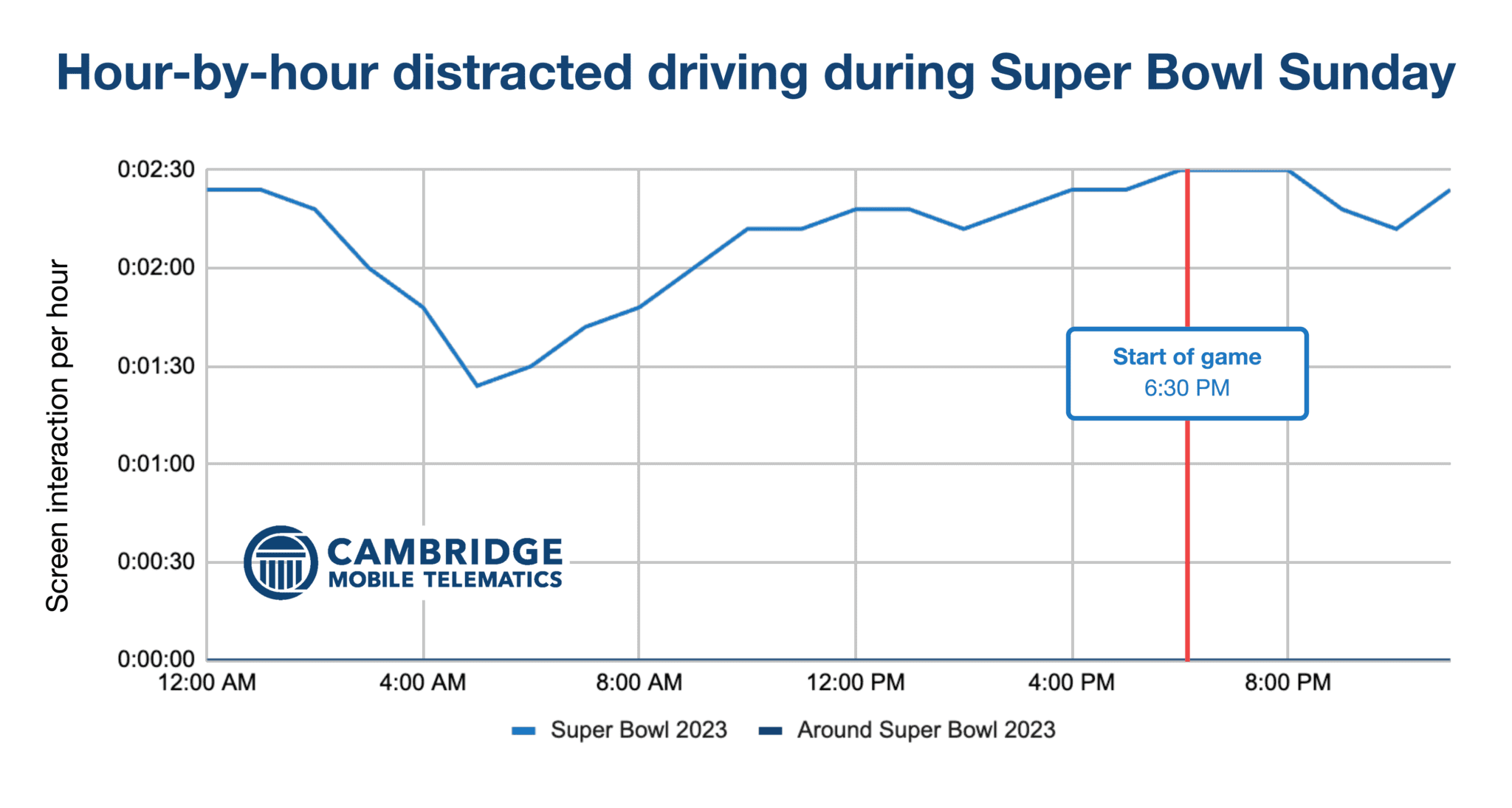
Distracted driving changes throughout Super Bowl Sunday
Distracted driving changes throughout the day on Super Bowl Sunday. Drivers are the most distracted surrounding game time. For instance, we see distracted driving climb from 4 PM and 6 PM when people are gearing up for kickoff. Over these two hours, drivers spend 2 minutes and 26 seconds driving distracted — a 7.4% jump in screen interaction compared to other times surrounding the game. During the game, screen interaction decreases by 5% compared to the pre-game period. After the game, distracted driving increases again from 11 PM and 1 AM. Distracted driving jumps back up to 2 minutes and 24 seconds – up 5.9% from game time. The biggest spike in screen interaction is from midnight to 6 AM when we see a 13.1% increase.
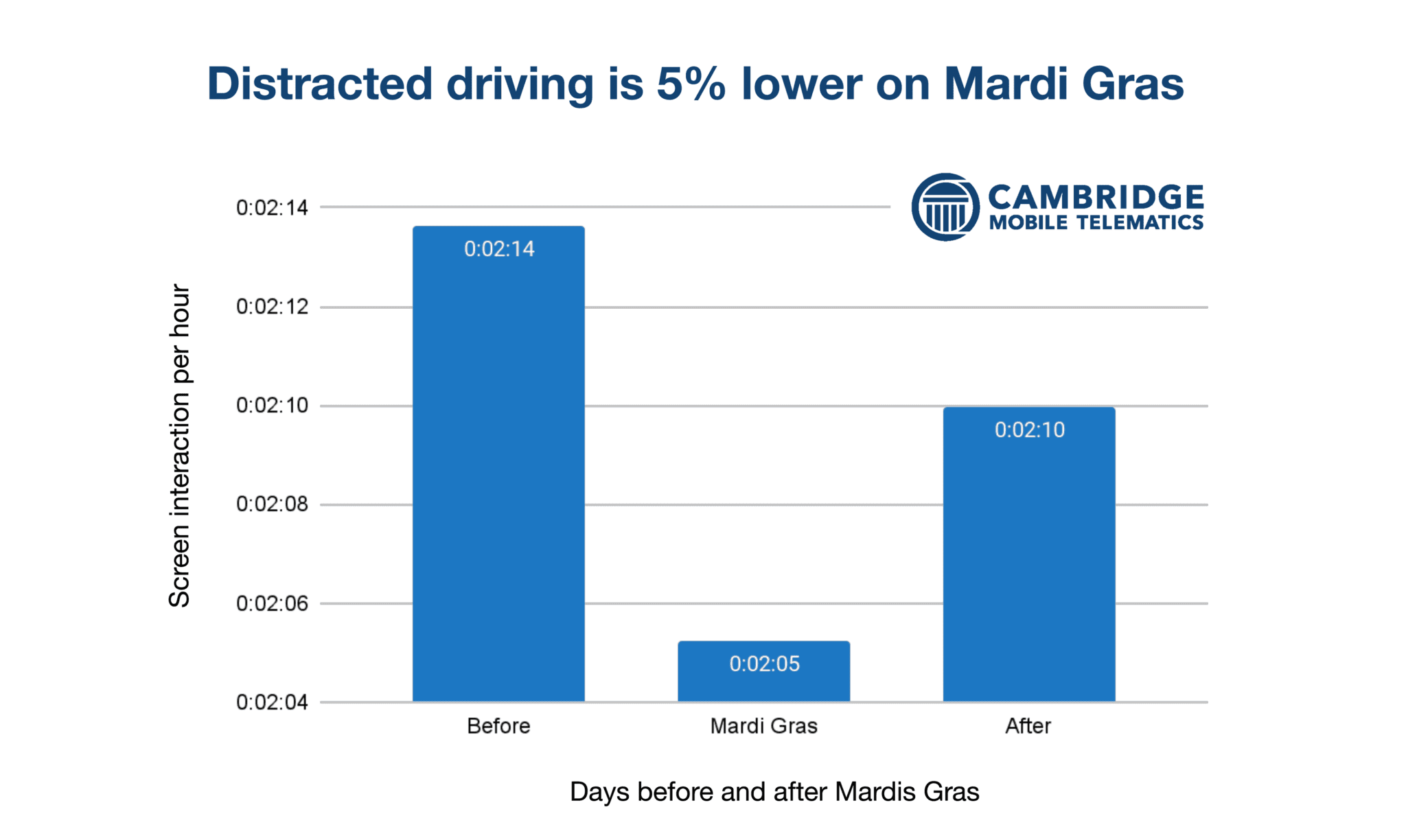
Mardi Gras
Mardi Gras is a much different celebration than the Super Bowl. While the Super Bowl is a nationwide event, Mardi Gras is a festival that’s celebrated regionally. Distracted driving and speeding patterns are also much different compared to Super Bowl Sunday. For this part of the analysis, CMT looked at driving behaviors in Louisiana.
On Mardi Gras, distracted driving drops compared to the days surrounding the festival. Drivers spend 2 minutes and 5 seconds engaging with their phones – a 5% decrease from the average day. This reduction in distracted driving on Mardi Gras has been a consistent trend since 2020.
Compared to Super Bowl Sunday and Valentine’s Day, Mardi Gras sees the lowest level of speeding. On Mardi Gras, drivers spend an average of 2 minutes and 13 seconds speeding. However, the periods before and after Mardi Gras see higher speeding rates. Before Mardi Gras, speeding times peak at 2 minutes and 32 seconds. Speeding remains elevated after the festival.
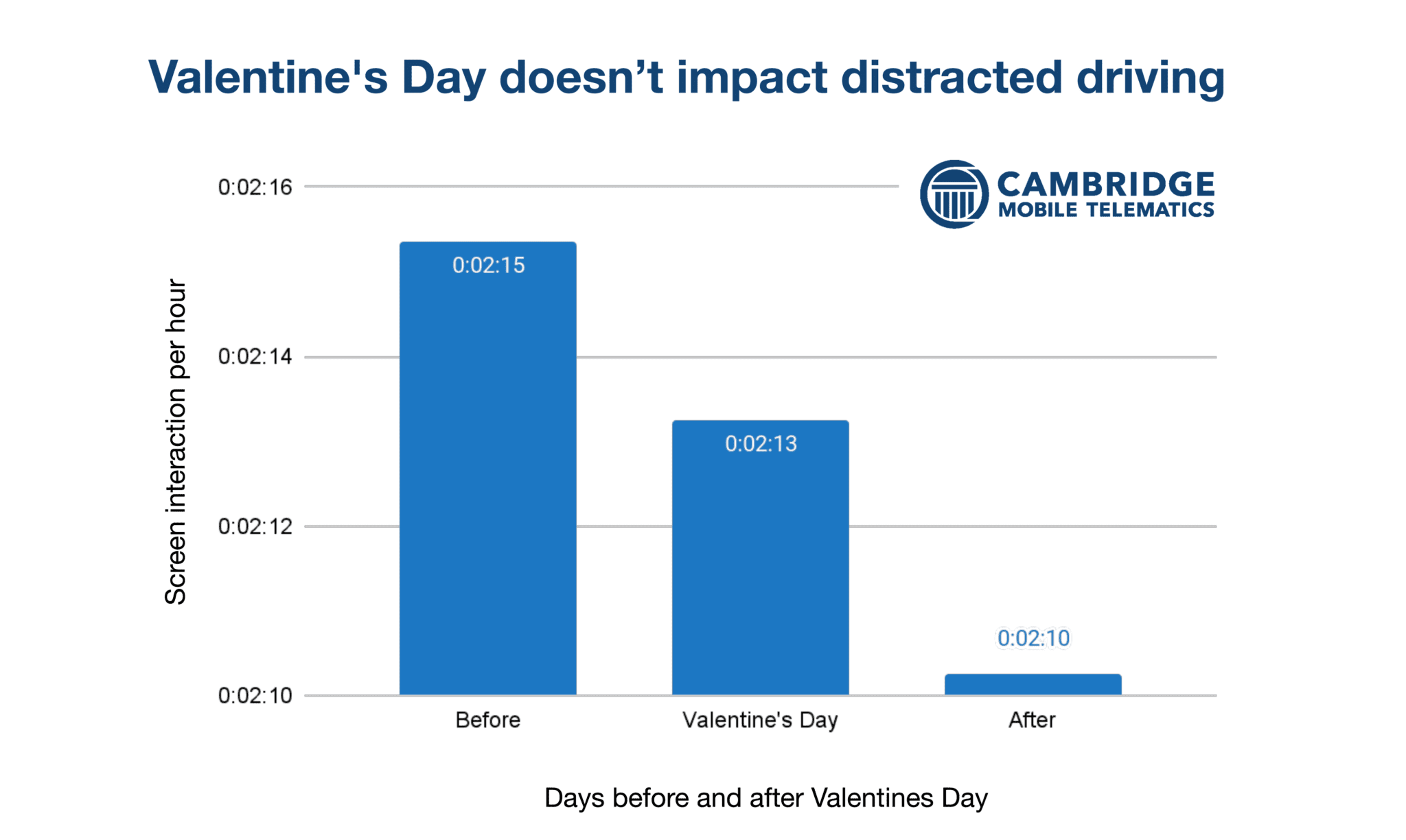
Valentine’s Day
On the heels of Super Bowl Sunday and Mardi Gras, Valentine’s Day doesn’t have an impact on distracted driving. On the days surrounding Valentine’s Day, drivers spend an average of 2 minutes and 13 seconds per hour using their phones behind the wheel. On Valentine’s Day, distracted driving remains level. We see distracted driving drop down to 2 minutes and 10 seconds the day after.
Valentine’s Day also doesn’t have a significant impact on speeding. Drivers spend an average of 2 minutes and 31 seconds speeding on February 14th, a 1% increase from the average days surrounding Valentine’s Day.
Safer roads for February, and beyond
This data shows how celebrations, no matter how big or small, can increase risky driving behaviors like distracted driving and speeding. This data shows us how important it is to stay focused and alert this upcoming Sunday and beyond.